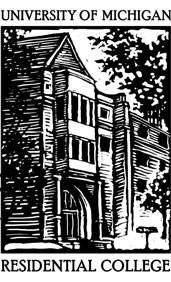
On day 2 of our tour of Russia, we experienced first-hand the other extreme of Russian life. Several hours out of St. Petersburg and we had clearly entered the provinces. Expanses of endless untamed forests and remote wooden houses went on for the entire 11-hour drive to Vytegra, and this same format is sure to continue as we explore the surrounding regions of the Vologda oblast.

From the moment we boarded our Vytegra bus, we knew that conditions in the small town were different than in lavish St. Petersburg. As we drove along the long road we encountered many modern tour buses full of Russian visitors to the region, yet ours was the middle bus pictured on the right, due to a lack of funding to fix their more modern bus that had recently broken down. Unfortunately, this theme is prevalent throughout Vytegra, as I will likely explain tomorrow, but in the meantime we made do with what we had and set off on our journey.

Unfortunately, as with most long trips, I spent most of the day sleeping, but the gem of our journey was found at the Alexander-Svirsky monastery. This was the holiest site in Russia, as the only place outside of Jerusalem where the Holy Trinity has appeared to a human, and its special place in Orthodox hearts was obvious from its meticulous upkeep. As we entered the buildings, carefully preserved icons and iconostases adorned the walls, inspiring awe amongst our group members. After receiving a brief introduction to the centuries-old history of the monastery, we were unexpectedly met by a choir of clergymen who sang booming hymns in the resonant center of the cathedral. As we toured the complex of buildings and viewed Alexander Svirsky himself (his body was found to be miraculously intact when exhumed 100 years after his death, and is still preserved today), it was obvious that the monastery was well funded, even if only funded by visitors to the region.

It initially seemed quite strange to me that amidst a region of economic hardship a religious center could be so prosperous, but then after some reflection I realized that this seemed like just the place to experience such a contrast. I have often experienced the tendency of those in rural areas and impoverished regions to have stronger religious affiliations and convictions, likely due to a greater desire (and perhaps need) for help from a higher power. As we discussed during our group reflections of the day, it was very possible that organizations and individuals donate generously in the hopes that their prayers will be answered.
As we get to know Vytegra better, I cannot wait to explore the connection between the church and the people, and see how economic circumstances affect this relationship. As we pull in to Vytegra late at night and finish reflecting, I cannot wait to see what is in store tomorrow from this already fascinating provincial town.









